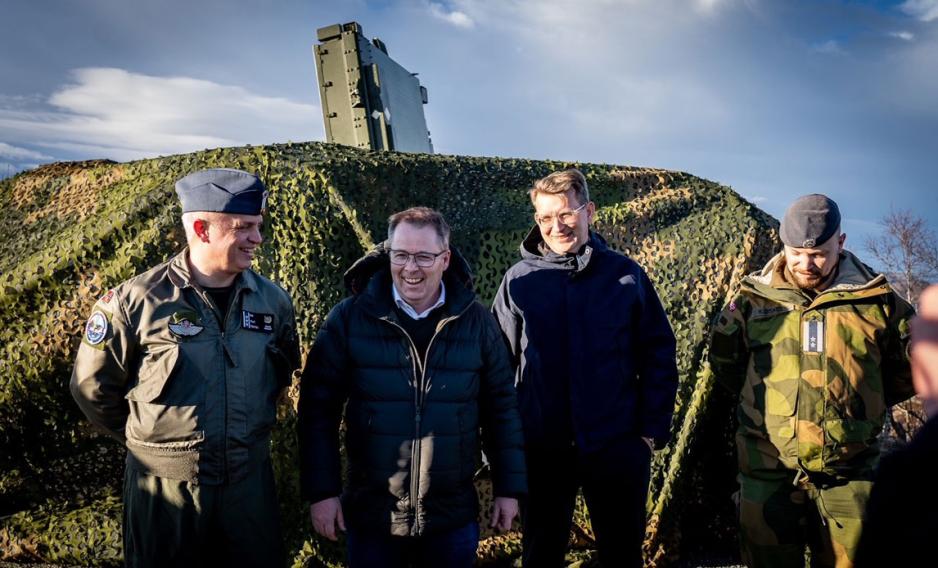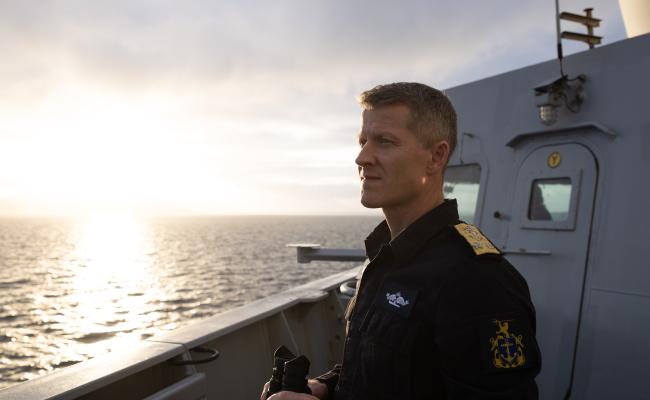Norway and Denmark to Cooperate on Maritime Drone Surveillance in the Arctic

Norway's MoD Bjørn Arild Gram (second from left) and Denmark's MoD Troels Lund Poulsen signed a letter of intent on drone cooperation on Tuesday. This took place on the sidelines of meetings the EU's Schuman Security and Defense Forum in Brussels. Here they are at an earlier occasion at Ørland Air Station, Norway. (Photo: The Danish Ministry of Defense)
Norway and Denmark are joining forces as they both are investing in long-range drones to improve situational awareness in the Arctic and North Atlantic. On Tuesday, the countries' defense ministers signed a letter of intent on drone cooperation.
In January, Denmark's plans for strengthened surveillance in the Arctic and the North Atlantic with long-range drones were secured in the defense settlement.
In April, the Norwegian government launched the acquisition of long-range drones for continuous monitoring of northern maritime areas of interest in its proposal for a new long-term defense plan.
Now, the two countries are coming together to strengthen situational awareness in northern waters with a letter of intent on drone cooperation, signed on Tuesday.
“Long-range drones are one of the investments in the Norwegian Defense Pledge to strengthen the ability to monitor the ocean areas in the North. It is a new capability for Norway and the Norwegian Armed Forces. Therefore, we want to cooperate with allies, in which Denmark is a relevant partner," says Norwegian MoD Bjørn Arild Gram (Centre).
"We also want to explore cooperation with allies on acquiring drones. It is too early to say if that is with Denmark," he continues.

The long-range US drone MQ-4C Triton, produced by Northrop Grumman, is among the alternatives considered by Norway. The US Navy uses this drone type to supplement P-8 Poseidon maritime patrol aircraft on intelligence, surveillance, and reconnaissance missions at sea. (Photo: Mitchell Austin/the US Marine Corps)
Several types up for consideration
In the aforementioned long-term defense plan, the Norwegian government also suggests Andøya in Northern Norway as a base for the new long-range drones, and the acquisition process has now been initiated.
"Norway is considering several types of drones. The work is in the start phase, so it is too early to say which is chosen. We must consider various conditions, such as how they will be used, what range we want, and cost," says Gram.
Today, the Norwegian Armed Forces employ P-8 Poseidon maritime patrol aircraft to surveil the sea areas in the North. The Norwegian government's long-term plan also aims to increase presence at sea with these aircraft by acquiring a P-8 simulator for training purposes.
The simulator will concurrently contribute to reduced climate emissions, states the Norwegian Ministry of Defense.

Denmark is prioritizing the security situation in the Arctic and the North Atlantic, as well as transatlantic connections, as this year's chair of the Nordic Defense Cooperation (NORDEFCO), which is developing rapidly. With the acquisition of new drones and collaboration on the use of these, Denmark and Norway seek to gain a better overview of the situation in northern waters. From the Danish side, the GIUK Gap is particularly in focus – two strategically important stretches in the sea areas between Greenland, Iceland, and the UK. (Map: The Greenland Card/the University of Copenhagen)






